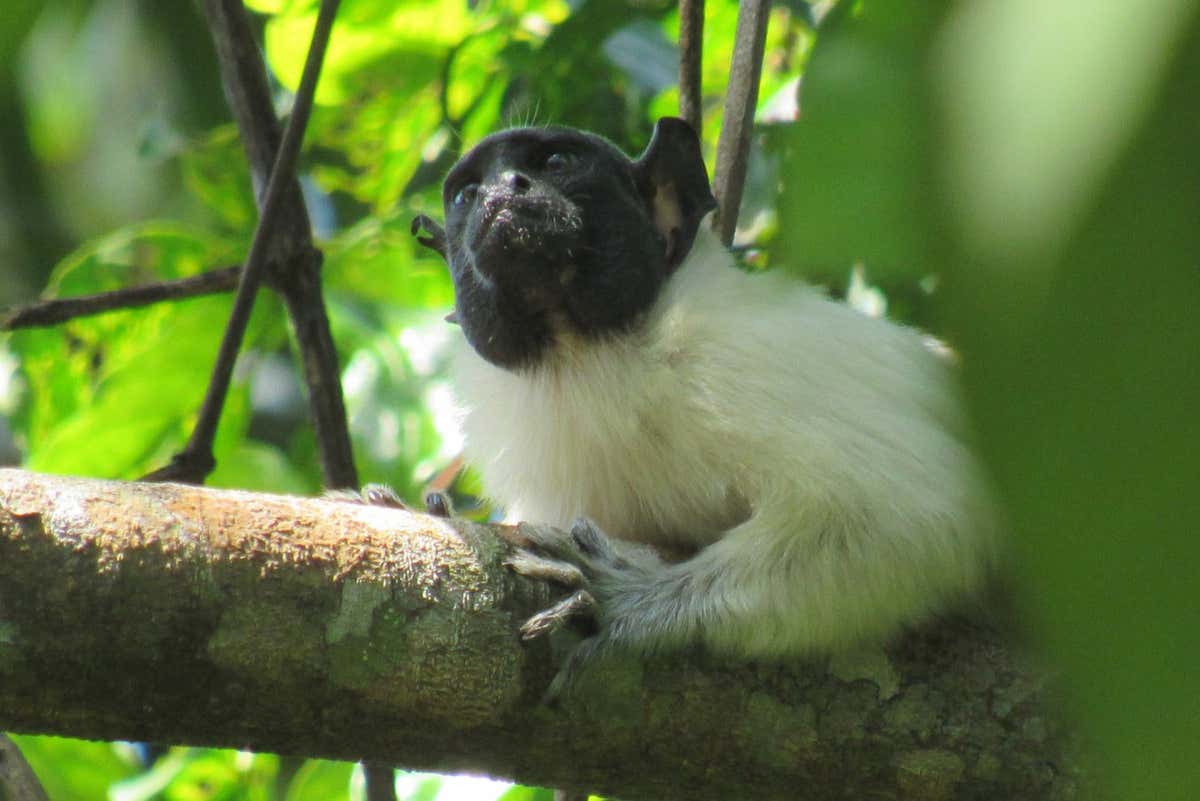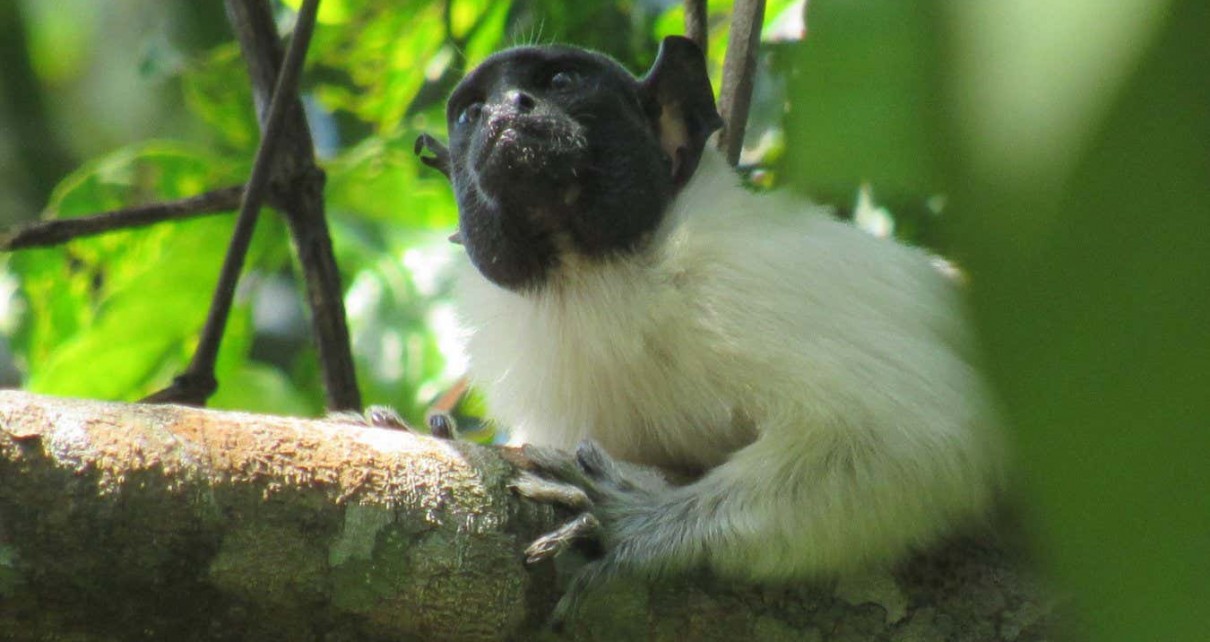[ad_1]

Pied tamarins use odour as a communication tool
Tainara Sobroza
When their vocal calls get drowned out by traffic and other human noises, monkeys living in the Amazon Rainforest resort to sending smell-based messages nearly twice as often as usual.
“Right in the middle of the Amazon Rainforest, you’ve got an extremely biodiverse rainforest with a massive city in the middle of it,” says Jacob Dunn at Anglia Ruskin University in the UK. “So human impacts are quite obvious on these animals, and it’s likely to be quite an important threat to them.”
Wild pied tamarins (Saguinus bicolor) – a critically endangered species living almost exclusively in patches of forest within the city of Manaus, Brazil – communicate with both vocal calls and scent-marking, in which they rub odours onto surfaces to mark their territorial boundaries and signal willingness to mate. They do this using scent glands in their chest, hands, feet, armpits and groins.
Curious about how communication tactics might shift in noisy environments, Dunn and his colleagues placed tracking collars on the lead female monkey in nine social groups comprised of up to 13 pied tamarins each. The researchers tracked the groups for 10 days, recording their activity over five-minute periods and noting how loud their environment was.
They found that noise in the five regions of forest where the monkeys lived varied from 40 to 80 decibels, with an average of nearly 59 decibels. The decibels spiked due to nearby freeways, military rifle exercises, chatty college students or screaming human babies, says Dunn.
When the monkeys were in areas that reached 65 decibels, they displayed 60 per cent more scent-marking behaviour than in the quietest areas. And when decibels reached 70 – the equivalent of a loud classroom or a running dishwasher – scent marking increased by 90 per cent.
Even so, the monkeys did not use vocal calls any less often in higher decibel areas, Dunn says. Their calls have an average decibel level of 74 and can reach up to 89.
In general, vocal calls provide quick communication over a long distance, whereas odours share information over a short distance, but for several days. “They use these long calls to interact not only within their own species, but also with other closely related species to kind of regulate competition for space,” says Dunn. “And if they’re unable to do that because it’s drowned out by [human] noise, that can lead to more conflict.”
While this work shows the animals’ ability to cope, it still reinforces the fact that human noise pollution is having a negative effect on wildlife, says Dunn.
Topics:
[ad_2]
Source link




